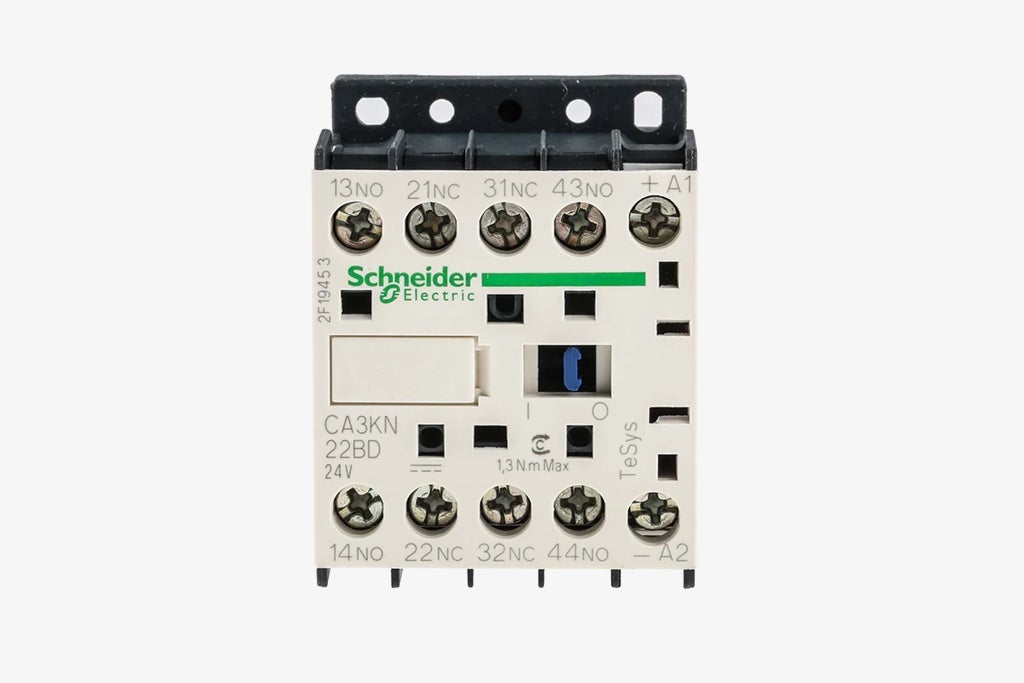Control Relays - How They Work & What They are For?
Electronic devices have evolved over the years and so have their parts. Control relays are no exception and have become an integral part of various electronic devices today. These electronic parts have the capacity of powering power plants, motors, transistors, power supply systems, and many more. In this article, we will discuss all control relays, from how they work to what they are used for.
What are control relays and what are their functions?
Also referred to as an electronic relay, a control relay is nothing but a switch, precisely an electromagnetic switch. The main function of a control relay is to allow the flow of electric current through a conducting coil, which closes or opens a switch. It also plays a role in protecting the circuit from current surges. When there is a control relay in place, there is no need to operate the switch manually for changing or isolating the state of the electric current.
What are the parts of an electronic relay?
All control relayscome with the following components:
- Mechanically movable contact
- Electromagnet
- Spring
- Switching points
You can make an electromagnet by winding a copper coil on any metal core. The two ends of the copper coil will be connected to the two pins of the relay. Generally, relays have three contact points, also known as switching points. The contacts are known as normally open (NO), common (COM), and normally close (NC) contacts.
A relay can be used in AC as well as DC circuits.
How does a control relay work?
The main principle on which an electronic relay function is that of electromagnetic induction. When current passes through the electromagnet, a magnetic field is created around it. There is the use of a switch for applying direct current (DC) to the load. When there is the application of direct current (DC) in the coil, it attracts contact. This is known as energizing the relay. And when there is the removal of the supply, the relay reaches back to its original position. This is called the de-energizing of the relay.
Interestingly, there are relays, where the contacts are initially closed. The circuit only opens when there is an electrical supply.
Solid state relays come with sensing elements for detecting the input voltage and switching the output with the use of a technique called Opto-coupling.
What are the different types of control relays?
Based on structural features and operating principles, there are different kinds of control relays. Some of the most important ones are as follows:
-
Contactor
This is a large relay, which is primarily used for switching a huge amount of electrical power through its contacts.
-
Solid-state relays
In these relays, there is use of solid-state components for performing the switching operations without moving any parts.
-
Thermal overload relays
These relays function on the principle of electrical energy’s thermal effect. When there is an excessive flow of current through the circuit, the thermal overload relay circuit will open. This happens as the bimetallic strip experiences a sudden surge in temperature and is pulled apart.
-
Electromagnetic relays
These relays are constructed with mechanical, electrical, as well as magnetic components. They also have operating coils and mechanical contacts. With the activation of the coil by the supply system, the mechanical contact either opens or closes.
Apart from the above-mentioned relays, there are other kinds as well including high-voltage, differential, polarized, multi-dimensional, automotive, moving coil, ground fault, latching and non-latching, and many more.
What is the application of control relays?
We know that the primary function of relays is to protect various electrical and electronic systems. In case there is a surge in voltage or electrical supply, there are high chances of electrical equipment getting damaged or worse, a short-circuit fire. Relays help in minimizing this damage, offering protection from electrical fires as well.
Control relays are used for controlling high-voltage circuits with low-voltage signals in various applications like different types of modems, audio amplifiers, starter solenoids in automobiles, and so on. In case there are faults in the distribution system or power transmission, relays can detect as well as isolate the faults.
Mentioned below are some areas where electronic relays are most commonly used:
- Industrial process controllers
- Lighting control systems
- Motor drives control
- Home appliances
- Automotive industry
- Traffic control
- Telecommunication
- Electrical power system protection system
- Computer interfaces
Purchase the best quality control relays at the Schneider Electric eShop
So, now that you understand the importance of control relays, do note how they must be purchased from the right place. It is, after all, the question of safety. And, when you are looking for a high-quality electronic relay, there is no better place than the Schneider Electric eShop. You can look up the kind of relays you want to serve your purpose well. The eShop offers a wide variety of electrical devices and equipment under one roof. Do visit the official website of Schneider Electric eShop to know more about the company and the different kinds of relays and other goods it offers to customers.
Read also - All You Need To Know About Contactors

Comments